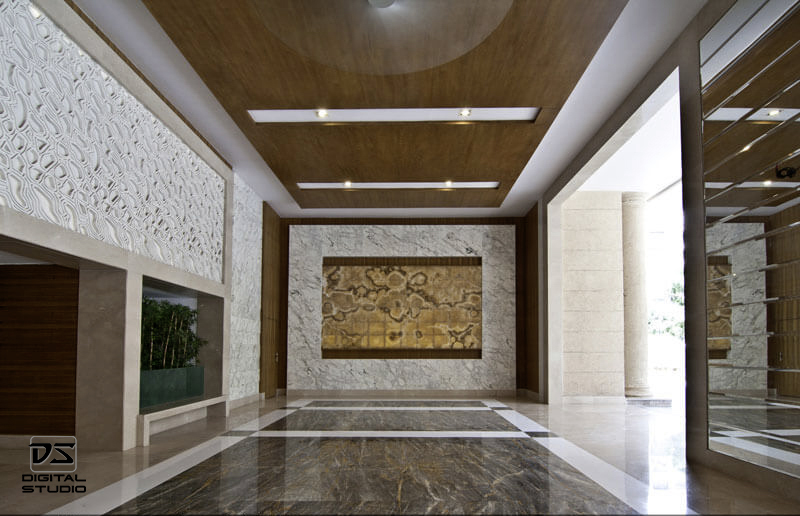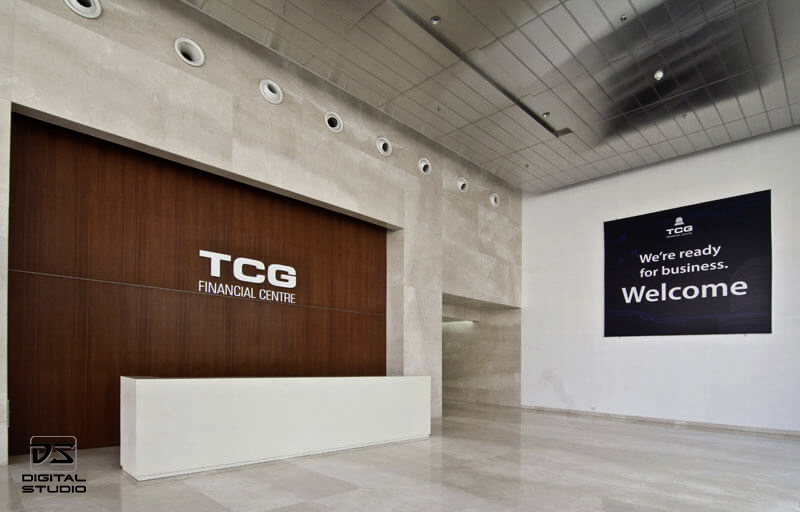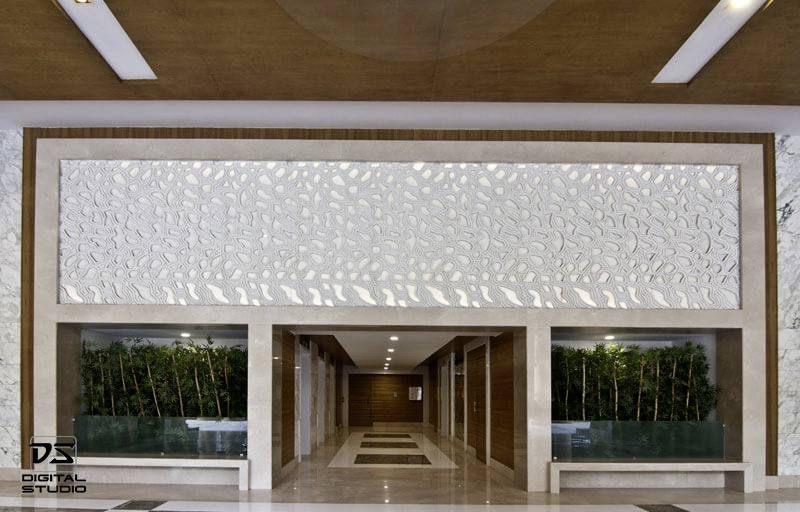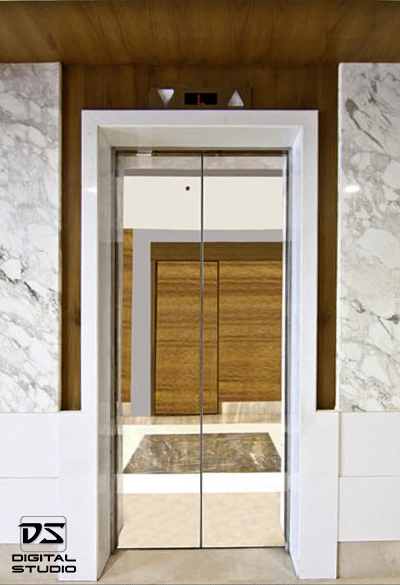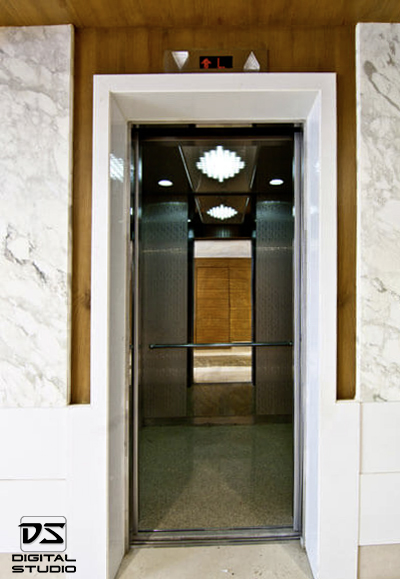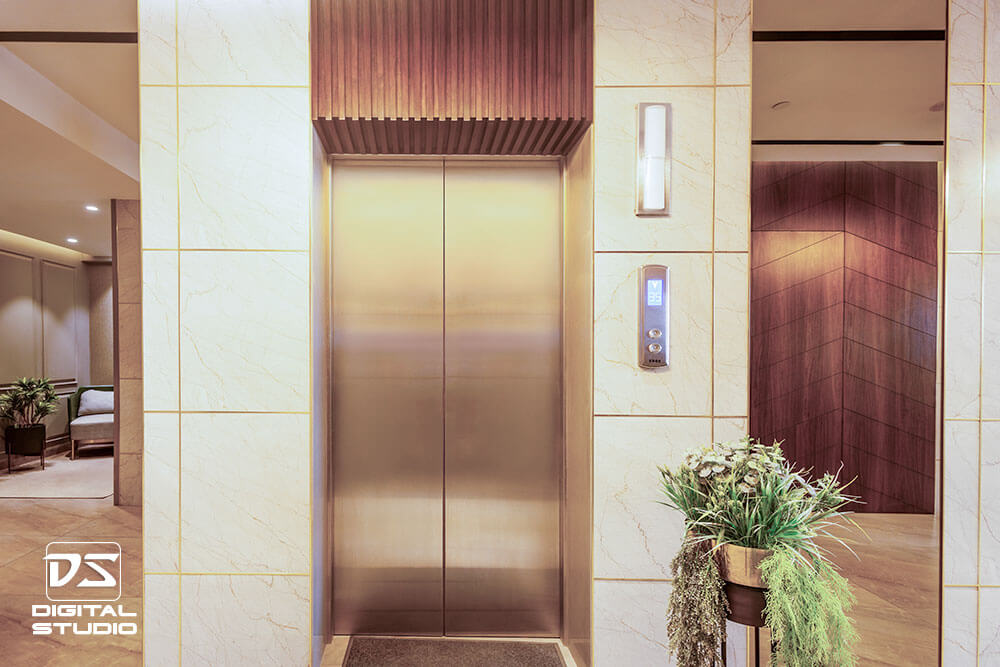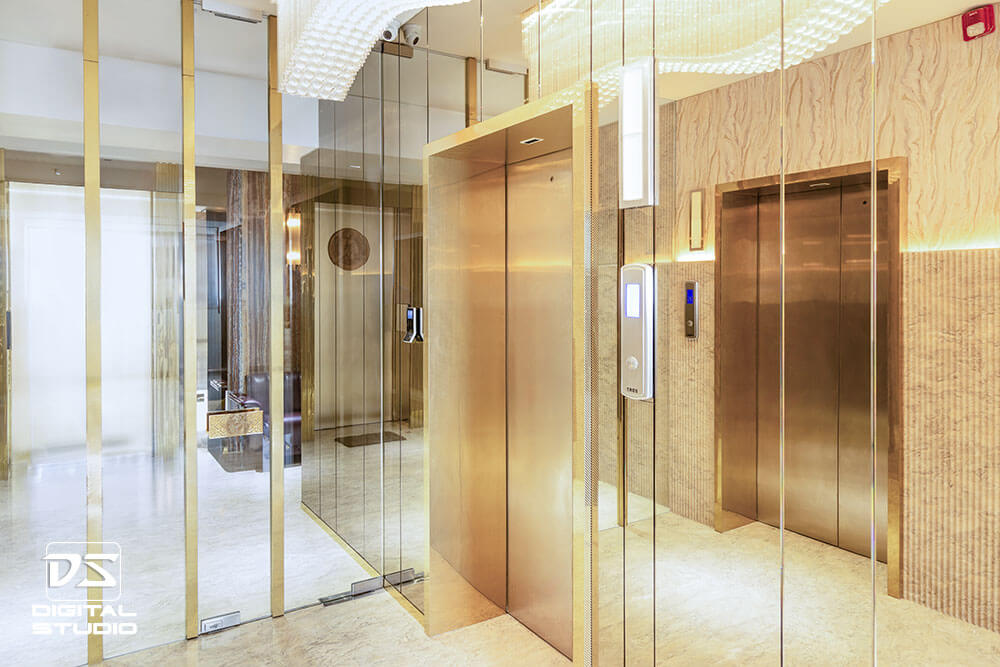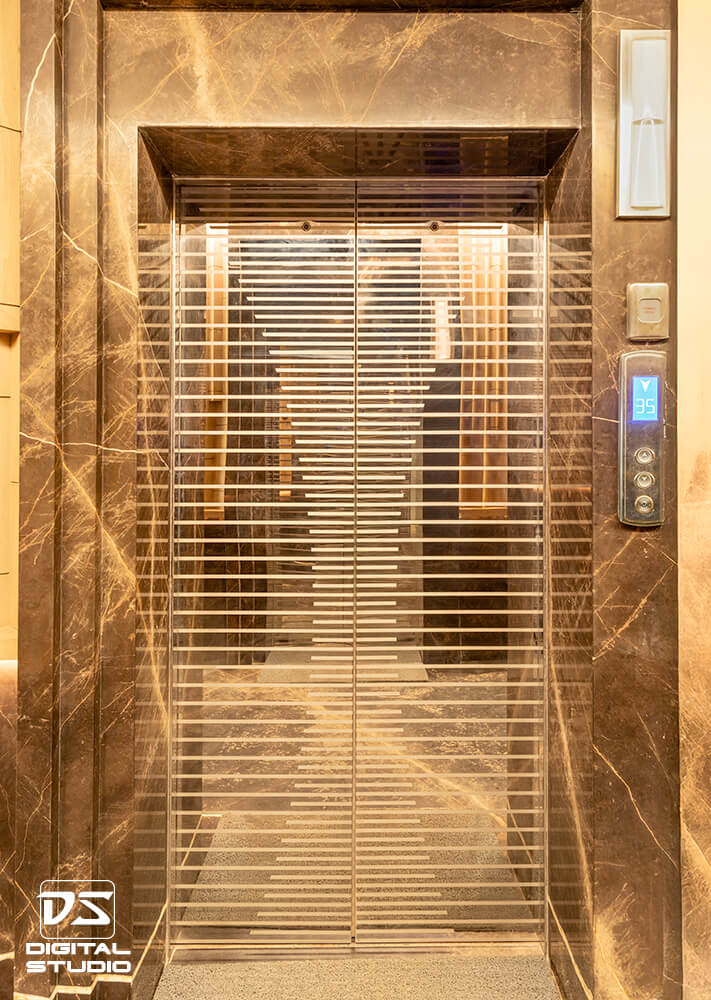Intro »
At Digital Studio, we understand that professional photography of elevators is about much more than simply capturing images.
Lifts are an integral part of a building’s identity and design, often serving as a key element in luxury residential, commercial, and corporate spaces.
That’s why we’ve crafted our elevator photography services to highlight the unique design, functionality, and aesthetics of your lifts, creating stunning images perfect for image banks, marketing materials, and coffee table books.
Why Professional Photography?
From luxury residential apartments, villas, and bungalows to high-end office spaces and hotels, a well-designed lift is welcomed by visitors, friends, and family.
Before a person enters an apartment or office space they experience the lift travel; which makes all the difference between a nice and spacious lift and an ill-kept one.
Professional, high-quality photos of your elevators capture these qualities, giving you striking visuals that enhance your brand’s identity across various media.
The Digital Studio Difference »
Our approach to the photo shoot is comprehensive and detail-oriented.
We work closely with clients to ensure that each photograph captures not just the elevator’s structure, but also its ambiance and design intricacies.
Whether it's sleek, minimalist lines, intricate paneling, or custom lighting, we’ll bring out every feature with clarity and precision.
Our team brings years of experience, high-end photography equipment, and a keen eye for architectural details.
Each project is handled with precision, ensuring every image stands out.
And we don’t stop there – our expert editing team takes each image to the next level, refining colors, contrasts, and finishes to ensure a flawless final product.
Yes, as per the project requirements, we also shoot HDR with world-class results.
Along with standard and wide-angle photography with pro-grade cameras and lenses, we also provide aerial photography and 4K videography of the building exteriors and lift shaft, etc.
Pan-India Projects »
Our Process »
The typical Scope of Work (SOW) involves:
- Site locations.
- Number of lifts.
- Lobby and floors to be photographed.
- Shortlisting of photographs for editing.
Based on these inputs, we submit the quote and proceed with the preliminary site visit, after confirmation of the project.
In addition to the photography of the lift interiors and lobby, we also cover the machine room; that houses the 'heart' of the system.
- Pre-Shoot Planning: We meet with you to discuss your objectives, preferences, and any unique features of your elevators. This helps us tailor our photography approach and highlight the best aspects of each lift.
- On-Site Photography: Our skilled photographers work efficiently on-site to capture various angles, perspectives, and details of your elevators, lobbies, and building exteriors.
- High-Level Editing: The editing process is where we make your images shine. From enhancing color vibrancy and adjusting light balance to removing reflections on glass and metal surfaces, we ensure each photograph is pristine. High-level editing takes time and effort from our editing team; hence delivery time is typically much longer than standard photograph editing.
- Final Review and Delivery: Once the photos are edited to perfection, we’ll review them with you to ensure they meet all expectations. We provide high-resolution files that are ready for print use in your marketing material like brochures, pamphlets, and even exhibition stalls, The web-resolution versions are optimized for multiple platforms, from websites to your social media platforms.
Applications »
- Image Banks: Create a cohesive image library to use for branding, presentations, and design references.
- Marketing Materials: High-quality and web-resolution for your brochures, social media, and advertising materials.
- Coffee Table Books: A well-designed coffee table book showcasing the elevators, can be a lasting addition to any reception area or meeting room.
Common Types Of Lifts »
- Passenger Elevators – Designed to carry people between floors in residential, commercial, or public buildings.
- Freight Elevators – Built for transporting heavy loads and goods; often found in warehouses, factories, and shopping centers.
- Service Elevators – Used by staff for moving equipment or supplies; typically located in back areas of hotels, hospitals, and large facilities.
- Hydraulic Elevators – Operate using hydraulic fluid and are ideal for low- to mid-rise buildings up to six floors.
- Traction Elevators – Use cables and counterweights for smooth travel, often in mid- to high-rise buildings; energy-efficient.
- Machine Room-Less (MRL) Elevators – Don’t require a separate machine room, making them space-efficient for low- to mid-rise buildings.
- Pneumatic (Vacuum) Elevators – Rely on air pressure for movement, commonly used in residential buildings; easy to install and energy-efficient.
- Observation (Panoramic) Elevators – Feature transparent glass walls for scenic views, popular in hotels, malls, and luxury high-rises.
- Dumbwaiter Elevators – Small lifts for transporting food, dishes, and other items between floors in restaurants, hospitals, and homes.
- Home Elevators – Compact elevators designed for residential use in bungalows, villas, and row houses.
Why Choose Digital Studio?
Our focus on quality, professionalism, and client satisfaction ensures that you get images that meet the highest standards.
Ready to elevate your brand with stunning elevator photography?
Feel free to connect with us on call / WhatsApp / Email.
